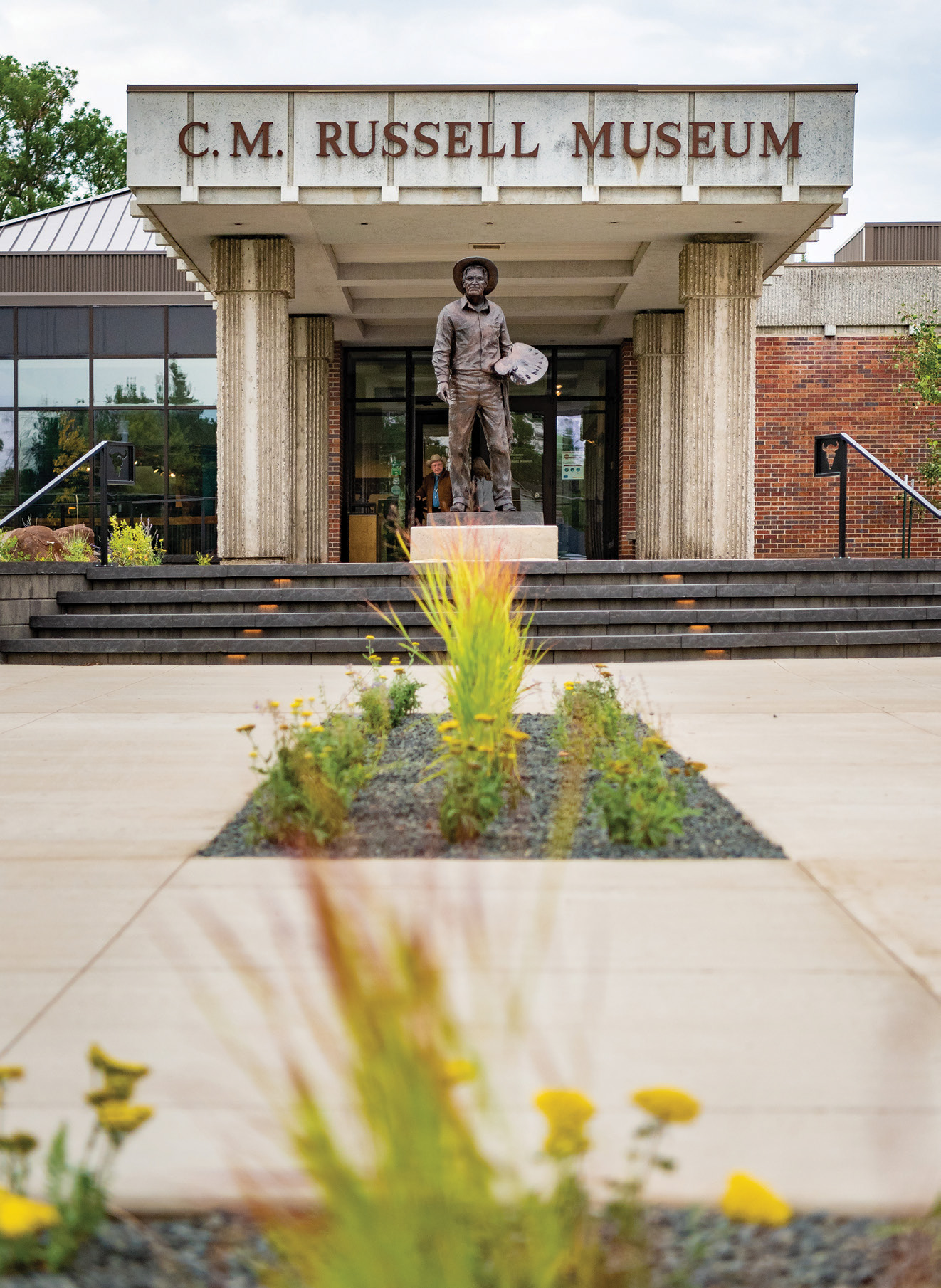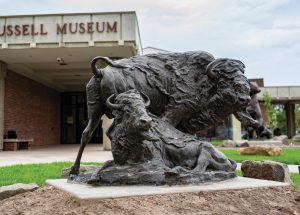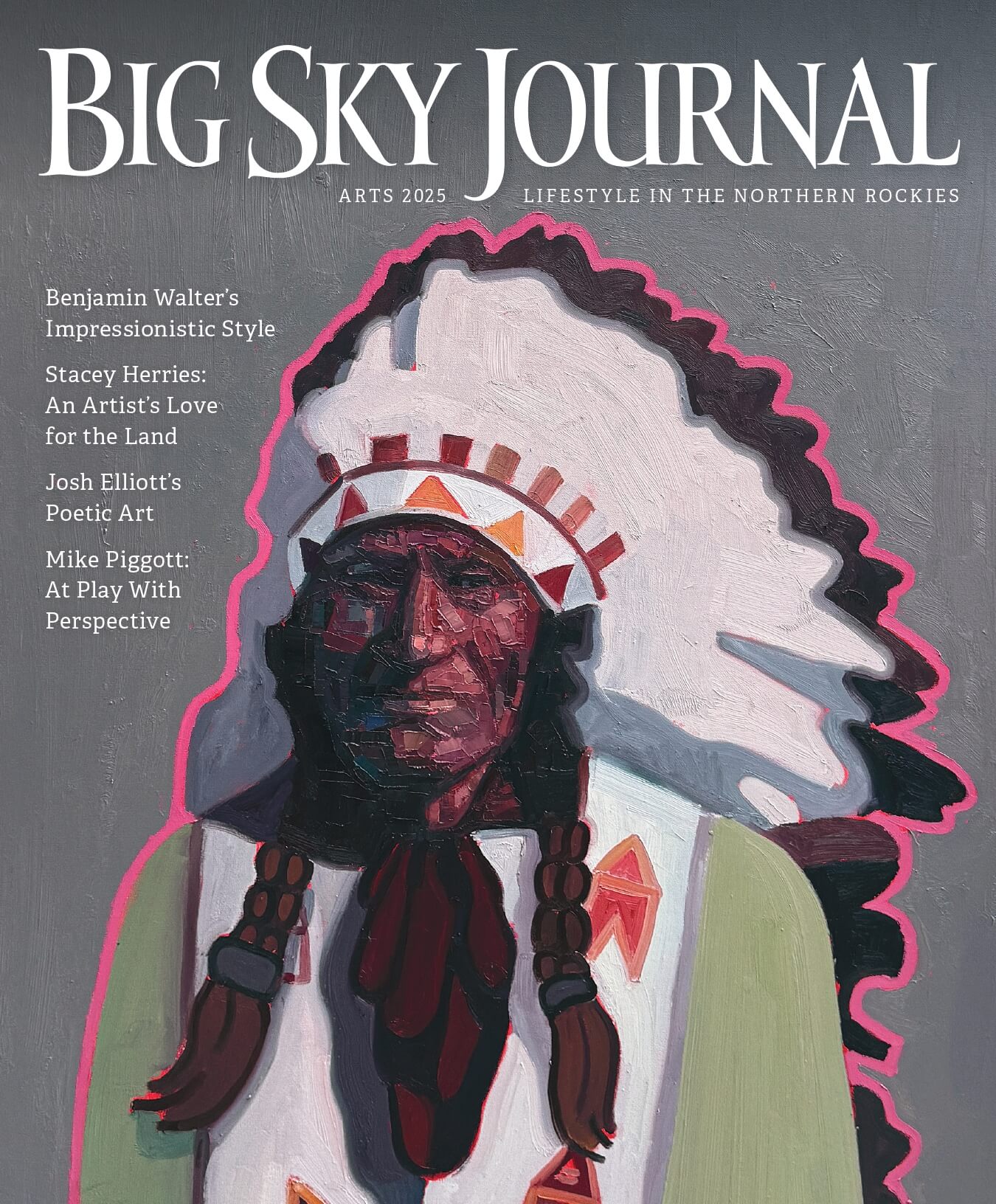
31 Jul Round Up: Spotlight: New Direction in a Lasting Legacy
This spring, longtime Great Falls, Montana resident and former C.M. Russell Museum Director of Art and Philanthropy Duane Braaten was appointed as the museum’s new executive director. Over the past two decades, he helped establish the museum as a nationally recognized leader in Western art and intends to continue his impassioned leadership in the months and years ahead. “As a Great Falls kid who has revered Charlie Russell since I was a student at C.M. Russell Elementary, the opportunity to be the next executive director is a dream come true,” says Braaten.
This past March, Braaten helped secure a record-breaking $9.16 million for the institution during its annual celebration and fundraising event, The Russell, which also included the largest sale of Russell’s work in the auction’s 57 years. “This year’s historic auction reflects Duane’s pivotal role in establishing the event as a leading destination for artists, collectors, and enthusiasts alike,” says C.M. Russell Museum Board Chair Tim Cashman. “His experience and leadership will be pivotal in advancing the museum’s mission as we move into our next chapter.”
Here, Braaten describes his plans for this next chapter.

BIG SKY JOURNAL: What initially drew you to the C.M. Russell Museum, and how does its focus and mission align with your personal and professional interests?
DUANE BRAATEN: In Great Falls, the legacy of Charles M. Russell is everywhere. Growing up here, my classmates and I quickly learned why both my elementary and high schools were named after the man behind the masterpieces. So, when the opportunity came to join the museum’s curatorial team nearly 30 years ago, I jumped at the chance to be a part of something meaningful, exciting, and significant. That leap did not disappoint. Today, our campus spans more than a city block and includes Russell’s home and iconic log-cabin studio — a testament to generations of dedicated support. This institution is the best of both worlds: a cultural hub for the community and a museum of international distinction.
BSJ: With your background in museum leadership, what are your top priorities for your first year at the Russell’s helm?
BRAATEN: Having been part of the leadership team at the museum for several years, I’m grateful for the head start as I step into my first year as executive director. Advantageously, I’m already familiar with our strategic plan, outstanding staff, and dedicated board of directors. I’m excited to use this moment of transition to invite folks — from across town or across the country — to discover why a world-class museum is nestled in the heart of this quiet rural neighborhood.
Looking ahead to next year, a major priority is planning an exciting lineup of exhibitions and events to mark 100 years of honoring Russell’s legacy since his passing in 1926.

BSJ: The museum’s annual fundraising event, The Russell, recently raised over $9 million. Why is this event important to the museum, what programming does it support, and how do you intend to match or further develop future fundraising goals?
BRAATEN: At the museum, we’re fortunate to host an event that draws national attention to Great Falls the weekend of Russell’s March 19 birthday. Since the first auction benefiting the museum in 1969, The Russell has developed a storied legacy as both a fundraiser and a ‘friend raiser.’ While each year brings its own exciting moments, the 2025 event stood out in a financially remarkable way: Total sales from contemporary and historic works reached $9.16 million, from which the museum retains commissions and premiums. It’s important to note that works are consigned by artists, collectors, and others, not drawn from the museum’s permanent collection. Through sale proceeds, sponsorship, and ticket revenue, The Russell generates about $1 million annually in essential operational support for our programs, exhibitions, and educational initiatives.
BSJ: What is the Russell’s role in the Great Falls community? How does the museum engage local and visiting audiences of all ages and backgrounds with its collections and programs?
BRAATEN: Although we are proud to be a museum of national importance and recognition, we’re just as proud that our modest-sized community has come together to support a campus more typical of a major metropolitan area. Ever since Charlie’s wife, Nancy, gifted the Russell home and studio to the city of Great Falls after his death, generations of residents have ensured that visitors would always feel welcome at the home of the beloved cowboy artist.
That welcome continues today. Every fourth-grade student in the county visits the museum as part of their curriculum. After learning about Russell as an artist, person, and key figure in Montana history, each student writes an essay from the prompt: “Charlie Russell is important because…”

BSJ: C.M. Russell is a central figure in Western art. How do you envision expanding the museum’s reach while preserving its historical authenticity and the iconic artist’s legacy?
BRAATEN: When visitors arrive at the museum, their experience is shaped by the artist’s name on the building. Fortunately, it’s a great name, with a timeless story to tell: that of a young boy who dreamed of going West and being a cowboy. It’s a story of friendship, humor, and adventure. And it just happens to be the story about one of our country’s most important and beloved artists. Our critical task is to share why his story still matters today. Russell was the kind of person you’d want to sit around the campfire with. His friends were drawn to him because he was the “real deal.” That authenticity still resonates today.
BSJ: In a rapidly evolving cultural landscape, how do you see Western art, and museums like the Russell that showcase it, adapting?
BRAATEN: The cultural landscape is always in some stage of transition. As an artistic preservationist, one of Russell’s main goals was to capture the West and a way of life that was quickly disappearing before his eyes. He understood the importance of sharing his chapter of the Western story.
Today, it’s our responsibility not only to reflect on the West that was but to bring current and future generations into the ongoing narrative. Museums remind us that we are all part of history. Some stories are best told through preserved objects from the past while others are better shared using modern technologies. We’re well aware that we compete for attention in a world flooded with information. Our success depends on offering thoughtful scholarship and engaging experiences that help people make sense of the past, present, and future.
For more information about the C.M. Russell Museum’s hours, events, and exhibitions, visit cmrussell.org.




No Comments